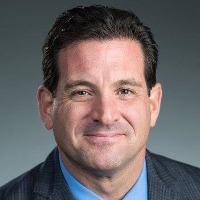Retirement is fraught with numerous risks. Living too long (or passing away early), market fluctuations, health issues and inflation represent the main threats to the nest egg you’ve diligently built up. They can cause irreparable harm to your or your loved ones’ quality of life during retirement. However, a carefully-planned and implemented 3-Bucket strategy can help mitigate these potential hazards, offering you peace of mind as you enter and progress through your golden years.
Bucket 1: Safe Money (Liquidity)
A high net worth doesn’t guarantee you’ll never face financial difficulties. One common problem is that someone doesn’t have enough cash on hand to cover unexpected expenses, such as home repairs, medical bills, or emergency assistance to family members.
Many experts argue that you should have at least six months’ worth of expenses safely tucked away in cash. In retirement, however, we stand by having at least 12 months’ worth of funds saved up just to have all of your bases covered. The last thing you want to do in retirement is to interrupt the investing process or pull from a fixed-income asset and pay a hefty penalty. Every dollar counts! Plus, it’s just a question of when something happens, not if it happens.
But just because this is your most liquid and safest bucket doesn’t mean you can’t put it to work for you. Shop around for a bank with high-interest rates in their savings and money market accounts. Put most of your funds into a money market account, then drip money from the higher-interest money market account to your savings account as necessary.
Bucket 2: Guaranteed Income
Now that you’ve retired, how do you maintain your lifestyle without that monthly income? Can you replicate that income with your retirement savings alone? Probably not, and it isn’t recommended to attempt to do so.
Your investment accounts are highly exposed to market risk, even if you have adjusted to a more conservative portfolio as you enter retirement. A poor sequence of returns significantly increases the risk of running out of money later on in retirement. By later on in retirement, we’re talking about your 80s and 90s.
That’s why you need a guaranteed income source, which is possible by creating a personal pension utilizing annuities and value-building Indexed Universal Life Insurance policies. These methods can potentially create a guaranteed, tax-free, lifelong income stream.
At the same time, a withdrawal strategy from your brokerage account can be implemented as necessary to help combat inflation while still promoting growth. For example, a 3% withdrawal strategy can supply you with extra cash as needed, but unless the stock market is having a bad year, it isn’t so much that it will hurt your portfolio’s growth potential.
Social Security money shouldn’t be left on the table, either. A detailed analysis of your and your spouse’s financial situation can be used to maximize Social Security benefits, such as who should take Social Security first and at what age to begin pulling from Social Security.
A personal pension maximization plan combined with a Social Security maximization strategy and strategic withdrawls from a brokerage account can heavily tip the scales in your favor to ensure you have a lifelong, inflation-adjusted income strategy.
Bucket 3: Protection
None of the strategies mentioned above matter if you don’t have proper safeguards in place. Baby boomers are facing a 70% chance of requiring 1-3 years of costly Long Term Care, but there are solutions.
For example, you can purchase a special life insurance policy using the qualfied funds from an IRA that can utilize the death benefit to pay for nursing costs, known as an asset-based long-term care policy. Any funds left over can still be distributed to beneficiaries – unlike other policies, it doesn’t suffer from ‘use it or lose it’. Of special note is the refundability of these funds, helping you maintain a liquid position.
It’s also vital to conduct a thorough insurance review to make use of 1035 exchanges and convertibility periods. A 1035 exchange deals with the tax-free exchange of old insurance policies or annuities for newer ones, while a convertibility period refers to the window when a term life insurance policy can be converted to a permanent life insurance policy without a new medical examination.
In Conclusion
In conclusion, the Three-Bucket Approach to retirement planning offers a comprehensive framework for addressing the risks to your retirement. By keeping a high level of liquidity, creating guaranteed lifelong income streams, and establishing protective measures with insurance, you can ensure you and your loved ones maintain a comfortable and secure lifestyle throughout your golden years.











